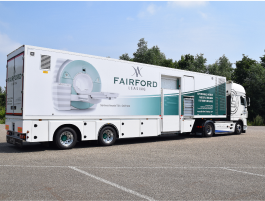Medical imaging has come a long way since the discovery of the X-ray in 1895. Over the course of 120 years, the profession has evolved as technological advances have given way to new modalities and in turn, new possibilities in patient care.
Today, even the invasive surgeries that took place just a decade ago have been replaced with diagnostic imaging procedures that have proved revolutionary in improving outcomes through early disease identification. What’s more, thanks to the ongoing digital transformation of the healthcare industry, key patient information now flows freely between clinicians, allowing for faster diagnosis and a unified service between departments.
Now, as we sit on the cusp of the next industrial revolution, change is on the horizon once more for the field of medical imaging and quantum leaps in technology are ushering in a new era of radiology – but what key trends can we expect to see in the next ten years?
Healthcare workflows become fully automated
Already, the digitisation of healthcare workflows has been transformational for healthcare practices in facilitating communication between departments and increasing day-to-day efficiency. With the adoption of automation and AI, however, large swathes of structured and unstructured data can now be analysed for precision care.
In the coming decade, we can expect this trend to continue as tools grow increasingly sophisticated and innovations such as electronic health records (EHR), revenue cycle and operations enable AI throughout the healthcare system. Coupled with existing tools such as the picture archiving and communication systems (PACS), automated workflows will enable patient data drawn from medical imaging scans to be readily available for practitioners, providing them with real-time information at the point of care.
Diagnostic wearables become mainstream
Wearable medical devices have already made inroads into diagnostic imaging – one of the most recent inventions being the MEG wearable brain scanner, which measures brain activity while the patient makes natural movements such as nodding, stretching or even playing ping-pong. The scanner has shown great potential in improving imaging possibilities for people with conditions that cause body movements; it’s lightweight nature making it easy to use and facilitating the capture of brain activity.
Another such device is the MRI glove, as used by The New York University School of Medicine. The device is worn like a regular glove and captures clear images in real-time of moving joints and tendons through detectors built into the garment. As well as guiding surgery, the glove has aided in the design of more accurate prosthetics. With the development and adoption of wearable technology set to continue, we can expect it to play a key role in the radiology practice in the coming few years.
AI plays a key role in diagnostic imaging
The advent of deep learning and computer vision has long been the subject of debate in the medical imaging profession; a development which some radiologists worry will threaten the need for their expertise. However, in the last few years, countless studies have proven the potential that AI has in improving speed and accuracy in medical imaging when combined with the knowledge and intuition of a qualified radiologist.
Just last year, for example, Korean researchers measured the performance of artificial intelligence programs versus board certified radiologists in detecting malignant nodules in X-rays. While AI was faster to detect malignant nodules than the radiologist, the best results came from teamwork – humans utilising the AI algorithm as a second look. Rather than replacing these roles, we can AI to continue complementing the radiology profession in 2019 as more practices begin to integrate solutions such as these into their workflow.
Medical imaging sees a push towards patient empowerment
Alongside greater access to medical information, the coming decade will see patients continue to push for a more personalised service from their healthcare providers and seek more engagement from medical imaging specialists. To fulfil their request, radiologists will need to ensure maximum efficiency in their workflow and make themselves available through optimisation and adoption of technology.
Should a patient wish to discuss the results of their scan or ask follow-up questions, the best radiologists will have the time to commit to providing advice or information directly. Consequently, practices will become increasingly conscious of how their service compares with their peers, and the level of patient interaction will be a top priority for radiologists in 2019.











